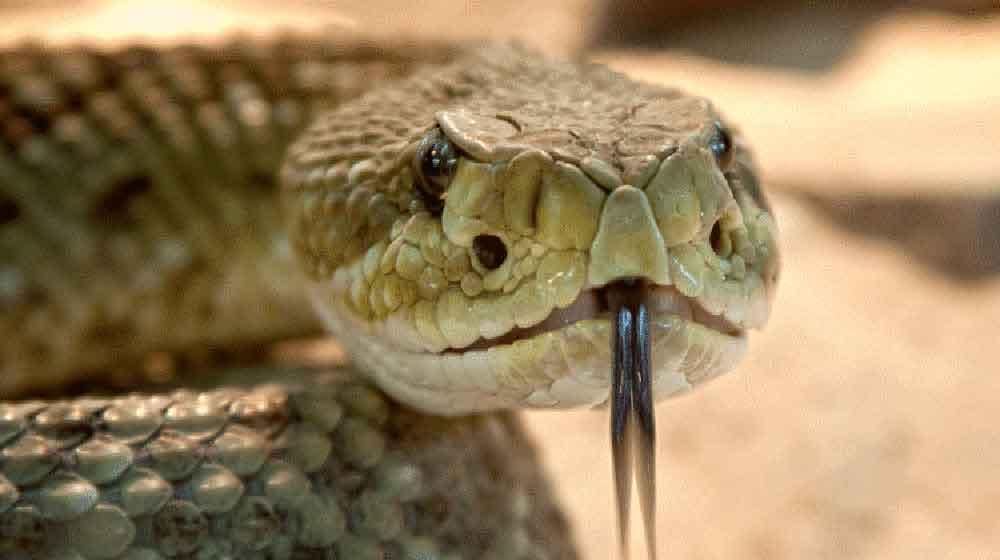Snake Bite: ER Physician Details What to Do

Learn what to do if you are bitten by a snake, how to get medical help and why you should not use Tourniquet after a snake bite.
Written by Dr. Christopher L Huerta, MD.
Over the past 35 years I have treated a lot of patients with snake bite wounds.
There are certain precautions everybody needs to know to prevent snake bites, and it is important to know how to treat snakebite wounds.
Working in the oil fields of West Texas you need to be aware of the risk of rattlesnakes.
Western Diamondback
Despite the name, the Western Diamondback is found mainly in the eastern part of Texas and is the most common and widespread venomous snake in Texas.
The Mottled Rock, Banded Rock, Blacktail, Mojave, Desert Massasauga and Prairie rattlesnakes are the most likely to be found in the oil fields of West Texas and Eastern New Mexico.
All these snakes are crotalinae (Pit Vipers). Pit Vipers have heat-sensing pit organ located between the eye and nostril on both sides of the head.
Symptoms of a Pit Viper Snake Bite
Symptoms of a pit viper snake bite include:
- Severe pain around the bite area
- Rapid swelling
- Bruising of the skin
- Difficulty breathing.
These symptoms may appear immediately after the snake bite or a few hours afterward.
How to Avoid Snake Bites
- Have a good set of boots and work pants that cover everything up to your waist
- No exposed skin.
- Keep your distance from all snakes.
- Never poke or taunt a snake.
- Lift your hands up above your head and walk away from the snake if you see one
What to do if You are Bitten by a Snake
Do the following immediately if you are bitten by a snake.
- Walk as far away from the snake as you possibly can
- Grab your phone and photograph the snake
- Photograph area of your body where you were bitten
- Use your phone to call for help.
- If you have a pen or marking device then circle the bite area and take another photo
Reasons to call for immediate help after a Snake Bite
If you sustain a snake bite, it is important that you call for immediate help. Failing to do so could endanger your life.
You may pass out within 30 minutes of the snake bite, and envenomation (poisoning by venom) by a pit viper causes tremendous pain, making it very difficult to drive yourself.
Should You Apply a Tourniquet after a Snake Bite?
NO. Applying a tourniquet after a snake bite will make tissue necrosis (death of tissue around the bite area) worse. Remove rings or anything on your body that is constricting. Drink plenty of fluids, lie flat and elevate the area of the bite above the level of your heart.
Most of the smaller hospital emergency departments do not have enough anti-venom. When your “help” arrives, have them call the emergency department of the nearest large city.
Ask the emergency department if they have at least 10 vials of CroFab. If not then call another hospital. The hospital with the most CroFab is where you need to drive to if swelling and pain are developing.
If you have NO swelling and NO pain then you most likely had a “dry bite” or bite from a nonvenomous snake. It is still important that you get the wound evaluated at an emergency room. Board-certified emergency room physicians at Signature Care Emergency Center can update your tetanus and evaluate you for antibiotic treatment.
The reason to take a picture of the snake is to help emergency room doctors determine if it was non-venomous or a Copperhead snake that may not require anti-venom.
The reason to photograph the bite wound is to help the physicians know the exact moment of the snake bite. Your phone will “time-stamp” the pictures and your physician can measure the distance that swelling has developed to see if you need CroFab.

Dr. Christopher L Huerta, MD, is a board-certified emergency room physician with over 35 years’ experience treating various illnesses, including snake bites. He obtained his medical degree from Washington University School of Medicine in St. Louis. Dr. Huerta is currently an ER physician at SignatureCare Emergency Center in Midland, TX.




